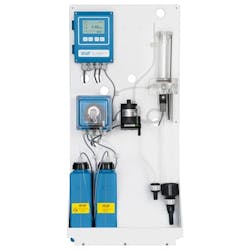Phosphate Analyzer Helps Control Soluble Lead
Corrosion in water distribution systems can impact the aesthetics of the water and increase costs, but more importantly, it can have a deleterious impact on a consumer’s health. Corrosion occurs because metals tend to oxidize when they contact water, resulting in the formation of stable metal oxides. Older water systems may include lead service lines or other lead fittings that must be protected to avoid elevated lead concentrations. Phosphate-based corrosion inhibitors are commonly used to minimize corrosion of potable water distribution systems, residential, commercial, and industrial potable water piping, and reduce lead corrosion to comply with EPA standards. Lead in drinking water is regulated by the EPA at less than or equal to 0.015 mg/L.
Corrosion inhibitors such as inorganic phosphates in the form of polyphosphates, orthophosphates, glassy phosphates and bimetallic phosphates are often employed. To achieve passivation of new or previously untreated systems phosphate is typically dosed to maintain a residual concentration greater than 3 mg/L as orthophosphate. Once systems have pacified the system, the goal for corrosion control is to maintain a residual of 0.5 to 1.5 mg/L as orthophosphate. To ensure proper corrosion control in the distribution system, ensure proper feed control at the water treatment plant, and reduce operating expenses, proper monitoring is required.
Reliable monitoring of critical phosphate levels can be achieved using the Swan Analytical AMI Phosphate Analyzer. Analog/digital outputs give you real time feedback for system control. Built-in surveillance functions generate alarms if measurement is not valid, such as missing flow, empty reagents, valve and photometer functionality. An optional cleaning mechanism is very useful for systems that notice excess phosphate buildup in their backflow preventers at their plants to ensure proper operation of the unit.
